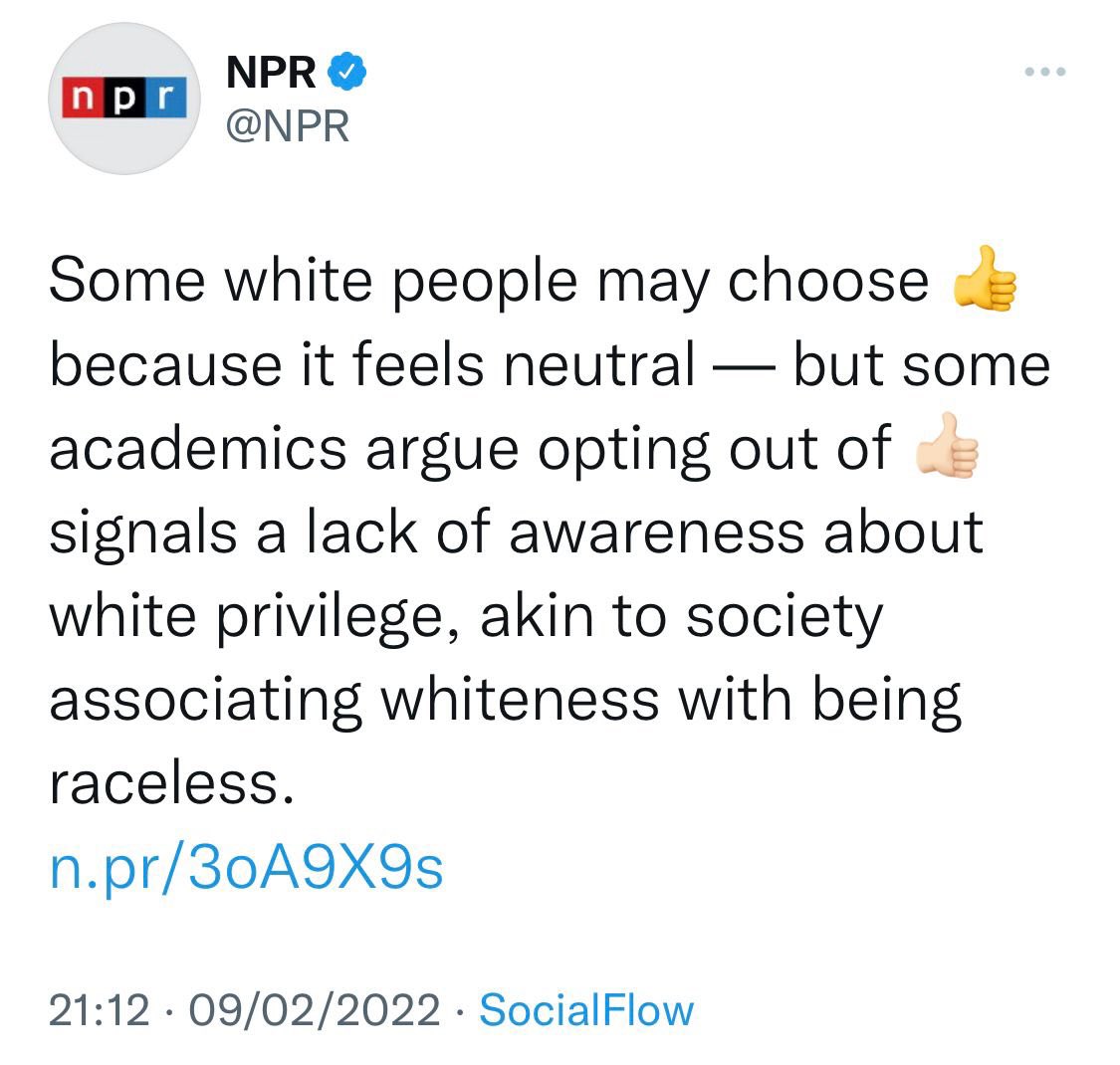Lumpenproletariat, please provide the definition of red-lining that you are using. I don't want to get into a multipage discussion of the illegality of racial discrimination and the Constitution's purpose to "promote the general Welfare" only to discover that you aren't using the common one.
My definition is about the same one used in the following:
One example of how CRT can be used to understand current disparities can be seen in the area of housing through a process called Redlining. In the 1930s, the banking and real estate industry outlined neighborhoods that were primarily occupied by people of color in red ink, denoting these areas as “risky.”
This definition is also mine (excluding reference to the 1930s), except that the above doesn't say what the "risky" designation is based on (or doesn't say accurately what it's based on). It's based on statistics such as the past credit record of that area, not on counting the number of Blacks or minorities there. But otherwise, the above definition of "redlining" is also mine.
Subsequently, banking institutions denied mortgages to people living in “redlined” areas (Hanks et al., 2018). Two thirds of redlined areas continue to be inhabited primarily by minoritized groups, most frequently Black and Latino individuals and families (Mitchell & Franco, 2018). Today, lending practices continue to be greater among neighborhoods that are predominately White. Further, individuals and families living in areas that were “redlined” have less wealth, greater poverty, lower life expectancy, and experience greater rates of chronic diseases. Additionally, homes of similar quality in neighborhoods with similar amenities are worth 23 percent less in majority Black neighborhoods, compared to those with very few or no Black residents (Perry et al., 2018). Understanding the historic underpinnings of current inequities as well as current systems and policies that maintain these inequities is critical to progress.
It is the definition of Critical Race Theorists. Who say that the policy of banks discriminating against high-risk neighborhoods is an example of structural racism. The discrimination takes the form of imposing more strict terms on loan applicants from these high-risk areas, and these high-risk areas "redlined" by the banks are areas which have higher minority populations.
Or, actually, my definition is the same as any which connects "redlining" to some kind of unjust discrimination and which demands that the practice of redlining by banks be made illegal. Just find any article on this subject, condemning the practice because it's discriminatory, and whatever their definition is, that's the same definition I intend here.
Let's not quibble about semantics. It's quite clear what "redlining" means. There have been many complaints about it, from CRT and BLM and others who condemn it as racist. Just go by whatever definition these complainers are using, and take that as my definition (except that the "high risk" designation is based on past history of credit in that area, not on the number of minorities there). And give the reasons why the practice should be made illegal.
If they say "redlining" means bankers look at a loan applicant who is Black (or other minority) and then automatically exclude them and say they are rejected for a loan, then they are wrong. Banks do not do that. But if they mean those applicants are often from an area which gets worse terms than other neighborhoods which are treated better, that's my definition. I.e., simply that they categorize different neighborhoods, or zip codes, etc., as higher or lower risk, and the terms (for a loan (or also for insurance in the case of home insurance)) are often determined by that risk level, rather than by the individual applicant's personal financial history/risk.
In the above quote, I'm actually not sure what the writer's precise definition is, but let's go by that, whatever you think he's saying. If he's saying that "higher risk" means that the population in that area is heavier minority, and that defines "high risk" and causes the "redlining" there, then he's just lying. But more correctly the "high risk" refers to crime statistics (or other statistics, like past default rate) which make that area a higher business risk, e.g. for lending, than other areas which are lower risk and thus get better terms.
I don't want to get into a multipage discussion of the illegality of racial discrimination and the Constitution's purpose to "promote the general Welfare" only to discover that you aren't using the common one.
The "general welfare" is promoted by allowing banks to continue this practice, because it reduces overall risk in the lending business, and thus reduces the cost to consumers generally.
The "general welfare" refers to the overall welfare to everyone, even though there are a few who are worse off. The best system is the one which provides the
greatest good for the greatest number even though a small number are made worse off. Reducing costs for everyone overall is best, even though the cost might be higher for a small number. E.g., requiring those in a high-crime group to pay a higher premium, like young males required to pay higher for auto insurance (all else being equal), is a net benefit for the whole society, even though the benefit to young males as a group is made less. But it promotes the general welfare, because the slightly higher cost for that group is more than offset by the lower cost overall to the whole population.
Likewise, redlining based on good data promotes the general welfare by reducing the lending costs overall to all consumers, thus allowing an increase in total lending.



